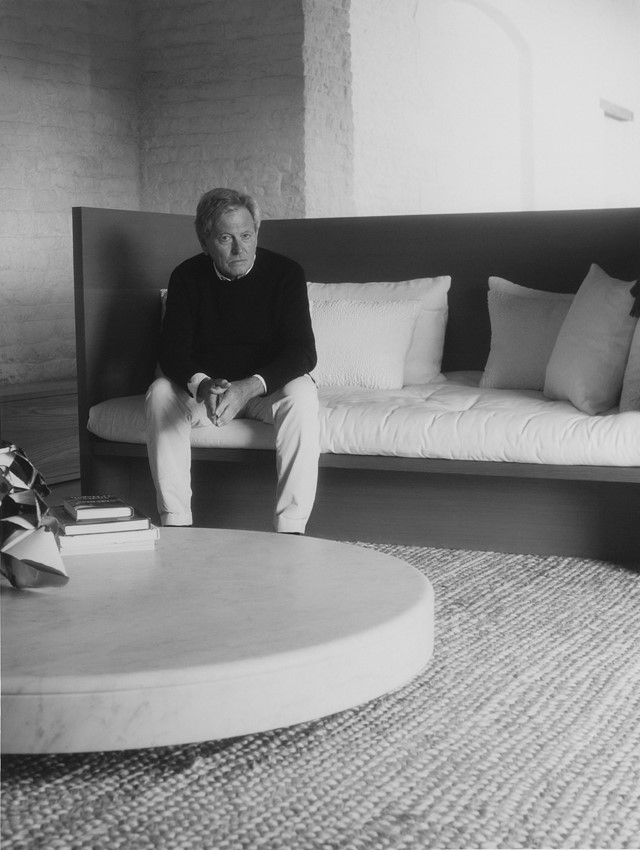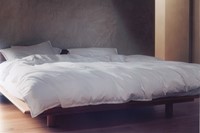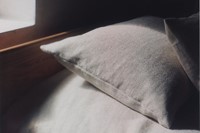As the new John Pawson/Tekla Collection is released, the acclaimed British architect talks about Home Farm, his pared-back design ethos, and why the term ‘minimalism’ is so often misunderstood
John Pawson has long contemplated why he’s always felt happiest when surrounded by less. Sometimes he thinks it might be a result of his Wesleyan Methodist upbringing, or the fact that his childhood was spent amongst the stark rural landscape of Halifax, Yorkshire. Occasionally he thinks it comes down to something simpler: pens. “When I was six years old, I had this set of Parker pens. But I went on a trampoline at Blackpool beach and lost them, and I was very upset,” he explains. “I vowed to myself that I shouldn’t be so attached to material things, and ever since then, I’ve not liked ‘stuff’”.
This vow has certainly been well kept; after establishing his studio in 1981, the architect has become synonymous with minimalism. All of his projects – which include London’s Design Museum and the Jaffa Hotel in Tel Aviv – are absent of excess, and are instead meditative studies of light, proportion and material. Home Farm, the 28-room abode in the Cotswolds that Pawson shares with his wife Catherine, is also an architectural ode to less-is-more. Made up of an assemblage of Grade II-listed agricultural buildings, internally the house has little more than white-washed walls, a handful of furnishings and (unusually for Pawson) some curtains: “they’re made from an exquisite undyed, boiled wool that is as much like a monk’s habit as I could find.”
Those keen for their own dwelling to echo the monastic quality of Home Farm will be happy to learn that Pawson has collaborated again with Danish fabric brand Tekla on a collection of bedding. The designer first worked with Tekla in 2018 on a line of woolen blankets, but is now back with a refined offering of bedcovers, sheets and pillowcases, all made from a linen-like cotton. As part of the John Pawson/Tekla Collection, Pawson has even created a pared-back timber bed frame. Here, he speaks with AnOther about his reunion with the Danish brand, and what it’s like to live with less.
Natasha Levy: What inspired your latest collaboration with Tekla? Did designing bedding feel like a natural progression?
John Pawson: I'm interested in everything that surrounds me. For me, everything is architecture, whether it's a saucepan, a glass, a building, or an interior. A bed is also pretty important – its sheets, the mattress, the frame, and the whole ritual of going to sleep. My wife Catherine and I are so very different, everything happens in bed for her: meals, reading or working. For me, the bed is just for sleeping in. Our bed is wide and there are two halves to it... but you can tell which side is Catherine's!
Charlie [Hedin] from Tekla showed me this type of cotton that looked more like linen, and it had a character and presence on the bed. Normally I think that a bed with just sheets on looks undressed, I've always been conscious of it. But these sheets have a real character, enough character for the bed to stand on its own.
NL: When it came to designing the bed frame, did you consider form or function more?
John Pawson: The one thing that I’ve recognised in the West is that we often have beds against the wall, and therefore we need bedheads – but I’ve always found them displeasing. So I designed a bed where, during the day, you can have the bedhead folded down and at night you can fold it back up.
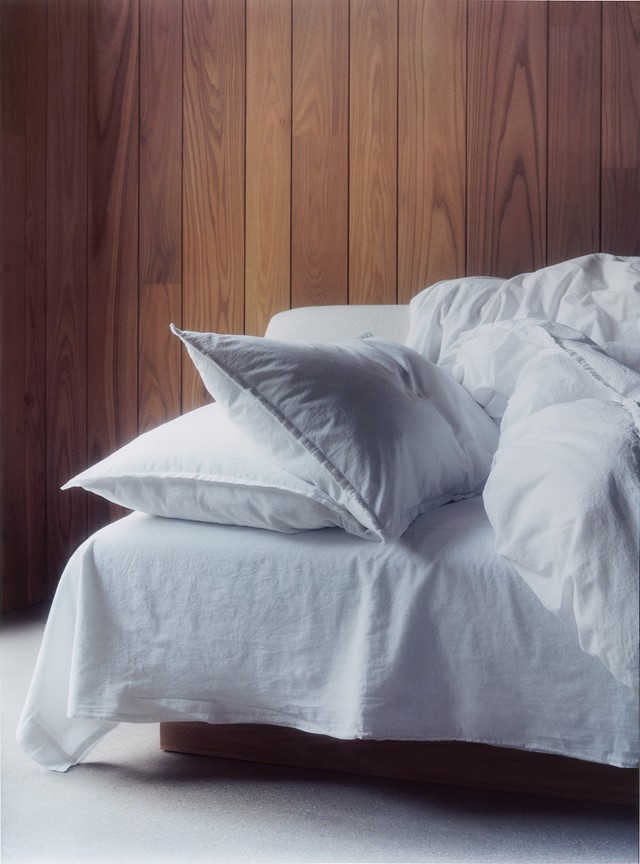
NL: When thinking about a home in the Cotswolds, it can drum up a particular aesthetic: chintzy wallpaper, squashy sofas, fireplaces. When you were creating Home Farm, did you feel the pressure to create a typical country home, or did you have a set concept of what you wanted?
JP: Definitely the latter. I’ve never quite understood that idea – does it mean living in townhouses equals having less, and living in country homes means having more? I don’t think so. Here [at Home Farm], I pared things down to what I found. I left the good things in place: the beams, the original fireplace and so on. But to most people, it’s 28 empty rooms.
NL: I can imagine that when you’re working on your own home and having to meet your own needs and expectations, it can be tougher than working with a client?
JP: It’s much more difficult to come to a final decision. But [with Home Farm] it was brilliant because Catherine [Pawson] and I had an agreement that I would do the architecture. She helped with all the soft things; this is the first time I’ve had curtains anywhere in 40 years.
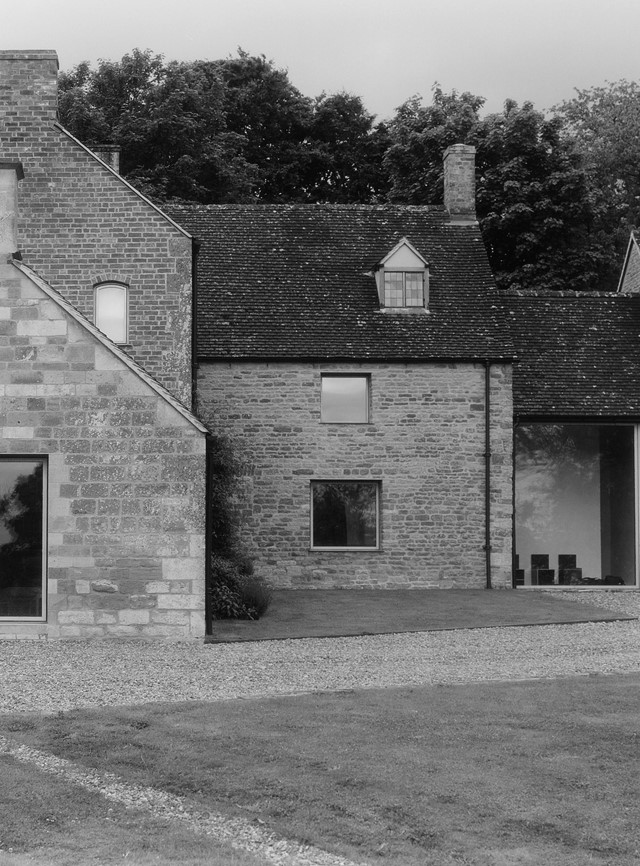
NL: Do you have sentiment towards home objects like books, paintings etc – or do you see them as clutter?
JP: I can certainly go without them, and if you really pressed me, I would say I prefer living without them … but I have a wife that I’m very much in love with, and she’s nice to live with. We do have some artworks; they tend to be from people that we know, so emotionally it would be difficult to give them away. But most people are surprised when they come [to Home Farm] and we tell them we’ve been here for four years – they think we’ve just moved in.
NL: Could you touch on how lockdown was for you; did you spend the majority of it at Home Farm?
JP: Yes, we were very privileged and felt incredibly lucky to have somewhere with space; our two sons came down and lived here with us. As we have three kitchens, it meant there were no fights during lockdown! The boys would be invited for dinner occasionally ... they had to do their own breakfast and lunch. I often do the washing up because I like everything put away. Catherine is a very good cook, but often she’ll leave everything out, or the pans get all piled up in the sink. But I get a good deal – washing up is easy.
To have a full year of seeing my grown-up sons every day would never have happened otherwise; Caius, my older son, normally lives in the East End, which is an hour away from my house in Notting Hill. It was almost serendipitous.
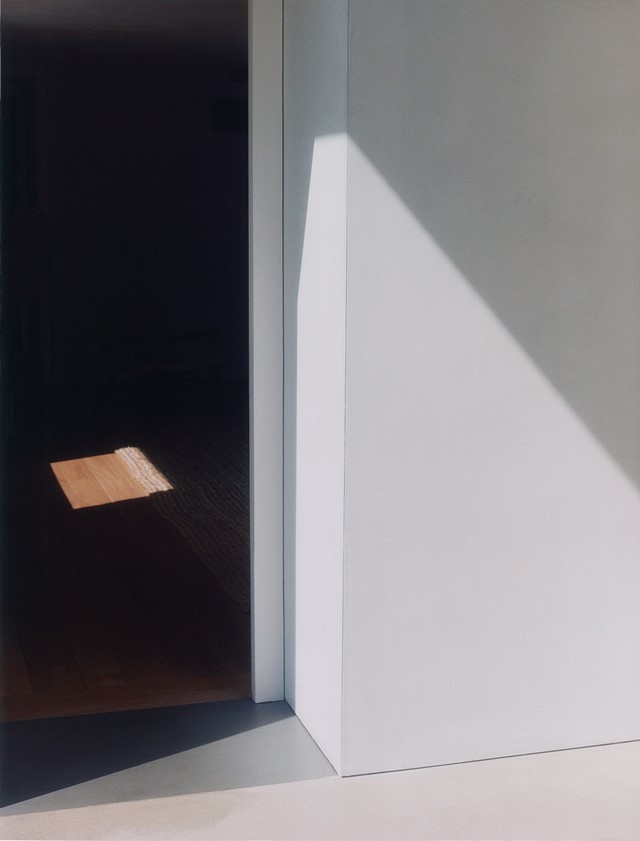
NL: Talking about living through lockdown, do you think that minimal interiors can foster a sense of comfort?
JP: I would say yes, but that’s a personal choice of mine … I get a sense of freedom and relax when everything around me is clear. Would I recommend that people try having less? I don’t know. If you have the feeling to do so, then yes – but it does take hard work to get back to having only what you really need.
NL: Is ‘minimalist’ a term that you like using to describe yourself?
JP: It’s very difficult to avoid boxes; people naturally want to pigeonhole you because otherwise they don't feel comfortable, for some reason. It’s not a big deal – I don't refer to myself as a minimalist because it's a term that’s so open to misinterpretation and means so many things. If you examine everything that I do, or how I live, it may not appear so minimal. It’s a term that helps people understand the general area of where I am aesthetic-wise, but nobody’s come up with a better word, or a word that’s as catchy. Donald Judd talked about it being ‘essentialist’, but all the different words that you could come up with always have an ‘ist’ on the end. ‘Minimalist’ does too, but ‘minimum’ is a very powerful word. ‘Minimum’ itself is a state you want to try and achieve – it’s when you can’t add or subtract to something without spoiling it.
The John Pawson/Tekla Collection is available to buy now.
